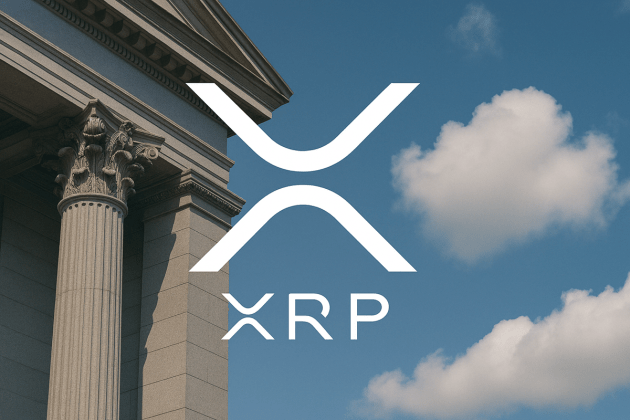Triangular arbitrage, a trading strategy used by traders in stock markets and forex, is being successfully employed by cryptocurrency traders. It allows traders to profit from price differences of digital assets across various platforms. While it is a complex strategy requiring a sophisticated skill set, the use of bots simplifies the process.
This article explains what is arbitrage and triangular arbitrage are, the use of bots for triangular arbitrage, the benefits of triangular arbitrage, the risks of triangular arbitrage and the potential evolution of triangular arbitrage in the digital realm.
What is arbitrage?
Arbitrage is a financial strategy where traders simultaneously buy and sell the same digital asset on different platforms to profit from price discrepancies. Market inefficiencies and varying demand-supply dynamics create these price discrepancies for the same assets across different platforms. For instance, the cost of Polygon’s MATIC (MATIC) may slightly differ on Uniswap and PancakeSwap.
Traders using this strategy, known as arbitrageurs, meticulously analyze these price disparities, buying low in one market and selling high in another to generate profits. Arbitrage presents a lucrative opportunity for investors.
What is triangular arbitrage?
In the context of cryptocurrency trading, a triangular arbitrage strategy uses price discrepancies between three different cryptocurrencies.
As long as price discrepancies exist between the cryptocurrency assets on different exchanges, the process involves trading one asset for another. To execute the triangular arbitrage strategy efficiently, the trader needs the competence to spot market irregularities, carry out concurrent trades across several asset pairs, and skillfully control risk. Since prices fluctuate rapidly in the cryptocurrency market, traders must respond quickly to capitalize on triangular arbitrage opportunities.
Depending on the prices of the three cryptocurrencies, the trader could employ different kinds of strategies. For instance, they could use buy-buy-sell, buy-sell-buy or sell-sell-buy to make a profit. Recognizing the opportunity for arbitrage and employing the right method requires a sophisticated skill set. Because the price difference between different cryptocurrencies may be small, traders often need to complete several cycles to earn a substantial profit.
A question among newbie traders is, “Is triangular arbitrage illegal?” The answer is that triangular arbitrage is not prohibited in most jurisdictions. It is simply the practice of profiting from short-term price differences in exchange rates. However, using funds from unlawful activities for trading, such as money laundering, is illegal, even though triangle arbitrage itself is legal.
Example of triangular arbitrage in crypto
Suppose a crypto trader noticed a triangular arbitrage with MATIC, Bitcoin (BTC) and Tether (USDT) on Binance. In this case, the triangular arbitrage strategy will work as follows:

Step1: Identifying the exchange rate discrepancy
Let’s assume the hypothetical exchange rates at the time of trade execution were:
- MATIC/BTC = 0.000018 BTC
- BTC/USDT = 29,500 USDT
- MATIC/USDT = 0.531 USDT (buy)
- MATIC/USDT = 0.535 USDT (sell)
Step 2: Find an arbitrage opportunity
To find the arbitrage opportunity, the trader needs to calculate the implied cross-rate of MATIC/USDT:
- (MATIC/BTC) * (BTC/USDT) = 0.000018 BTC * 29,500 USDT = 0.531 USDT
The implied cross-rate refers to the exchange rate between two cryptocurrencies that is derived indirectly from their exchange rates with a third cryptocurrency. Arbitrage opportunities arise when the implied cross-rate differs from the actual market rate between the two cryptocurrencies.
The trader then compares the actual MATIC/USDT rates to see if any arbitrage opportunity exists:
- Buy rate: 0.531 USDT
- Sell rate: 0.535 USDT
As the implied rate is lower than the sell rate — i.e., price discrepancy — it is a potential arbitrage opportunity.
Step 3: Execute trades
The trader executed a series of trades as follows:
Trade 1: Buy MATIC with USDT
The trader used 10,000 USDT to purchase MATIC at the exchange rate of 0.531 USDT/MATIC, acquiring 18,832.61 MATIC.
Trade 2: Sell MATIC for BTC
Subsequently, the trader sold 18,832.61 MATIC for BTC at the rate of 0.000018 BTC/MATIC, resulting in 0.338987 BTC.
Trade 3: Sell BTC for USDT
Finally, the trader converted the 0.338987 BTC into USDT at the exchange rate of 29,500 USDT/BTC, obtaining 10,053.95 USDT.
Step 4: Calculate the profit
- Gross profit: Final USDT amount (10,053.95 USDT) - Initial USDT amount (10,000 USDT) = 53.95 USDT
- Trading fees: Total fees (suppose its 0.1% per trade): 10,000 USDT * 0.001 + 10,053.95 USDT * 0.001 = 20.05 USDT
- Net profit: Gross profit (53.95 USDT) - total fees (20.05 USDT) = 33.90 USDT
In the above hypothetical scenario, the trader started with 10,000 USDT and executed three trades: buying 18,832.61 MATIC, selling for 0.338987 BTC and converting to 10,053.95 USDT. After deducting 20.05 USDT in fees, the trader profited 33.90 USDT from successful triangular arbitrage, capitalizing on cryptocurrency price differentials.
Algorithmic trading using triangular arbitrage
Recognizing and executing opportunities for triangular arbitrage multiple times a day at a fast pace and executing them is a complex task beyond human capacity. Therefore, triangular arbitrage is now carried out by bots, which are algorithms designed for trading. These bots are capable of analyzing several cryptocurrency pairs simultaneously and executing arbitrage opportunities that would otherwise go unnoticed.
Algorithmic trading enables real-time exploitation of pricing disparities, leading to profitability. Bots can capitalize on even tiny price variations across various pairs, producing steady earnings over time and supporting the overall growth of the traders’ portfolio.
Triangular arbitrage vs. statistical arbitrage
Triangular arbitrage and statistical arbitrage are two distinct trading strategies that exploit market inefficiencies, while triangular arbitrage capitalizes on pricing discrepancies among three currency pairs.
In contrast, statistical arbitrage involves analysts examining historical pricing data and using statistical models to find trading opportunities across a range of assets. The strategy often entails taking both long and short positions simultaneously to profit from mean reversion or other statistical correlations. Mean reversion refers to the assumption that an asset’s price will converge to the average price over time.
Because triangle arbitrage frequently uses less leverage and executes transactions quickly to limit exposure, it usually carries a low level of risk. Conversely, statistical arbitrage may entail greater leverage, which raises the risk because of the longer holding periods and possible volatility in the market.
The table below provides a summary of the differences between triangular arbitrage and statistical arbitrage:

Benefits of triangular arbitrage
Triangular arbitrage offers several advantages to traders:
More transparency
Trading activity in cryptocurrency marketplaces increases when three different trading pairs participate in triangle arbitrage. Increased market liquidity adds depth to a crypto market, facilitating large buy and sell orders of cryptocurrency assets. Moreover, enhanced liquidity makes it easier to execute significant trades without causing substantial price fluctuations.
Increased market capability
Triangle arbitrage helps identify and correct pricing imbalances in the market, just like other arbitrage techniques. By actively exploiting these disparities, traders unintentionally enhance market efficiency and stabilize prices, creating a level playing field for all participants.
Increased opportunity for profit
Compared to traders limited to single markets, triangle arbitrageurs have more opportunities to make money. Through adept identification and execution of triangle arbitrage transactions, traders can profit from both market oscillations and price disparities across several currency pairs.
Mitigation of risk
Triangle arbitrage enables cryptocurrency traders to spread risk among several assets, lowering their exposure to the volatility of a single currency. The diversification technique mitigates the effects of abrupt price fluctuations in the inherently volatile cryptocurrency markets.
However, cryptocurrencies bring their own unique set of risks, such as a lack of regulatory clarity and sharp price changes. An arbitrage trader should be capable of handling these risks efficiently.
Risks of triangular arbitrage
Here are some risks cryptocurrency traders have to deal with when using triangular arbitrage:
Liquidity risk
Insufficient market liquidity or a limited number of digital assets traders can hinder the execution of all trades necessary for completing a triangular arbitrage. If assets cannot be bought or sold at desired prices, traders risk incurring losses due to this lack of liquidity.
Market efficiencies
While triangular arbitrage offers potential profitability in ideal scenarios, traders grapple with uncontrollable factors that can disrupt trade timing. These factors encompass stock market inefficiencies causing execution delays and market volatility triggering price fluctuations before transactions are completed.
Slippage risk
Triangular arbitrage involves high-frequency trading when opportunities arise, making it particularly susceptible to slippage risk. Slippage refers to the discrepancy between the intended trade price and the actual execution price, often occurring in rapidly moving cryptocurrency markets.
Due to the time-sensitive nature of triangular arbitrage involving multiple trades, the prices and spreads between currencies can shift before a trader manually completes the final trade. This dynamic can lead to diminished profits or even losses.
How triangular arbitrage is likely to evolve in the digital realm
Fast-paced technological developments and subsequent developments in financial markets are capable of changing the triangular arbitrage environment in unexpected ways. In the near future, though, trades are likely to become more sophisticated, precise and efficient.
If triangle arbitrage becomes more popular in the realm of digital assets, increased competition will make it harder to turn a profit. Additionally, changes in monetary and regulatory policies in various nations are likely to influence profits from triangular arbitrage.
Traders need to be flexible and nimble in this dynamic financial environment to capitalize on triangular arbitrage opportunities when cryptocurrency markets evolve.










